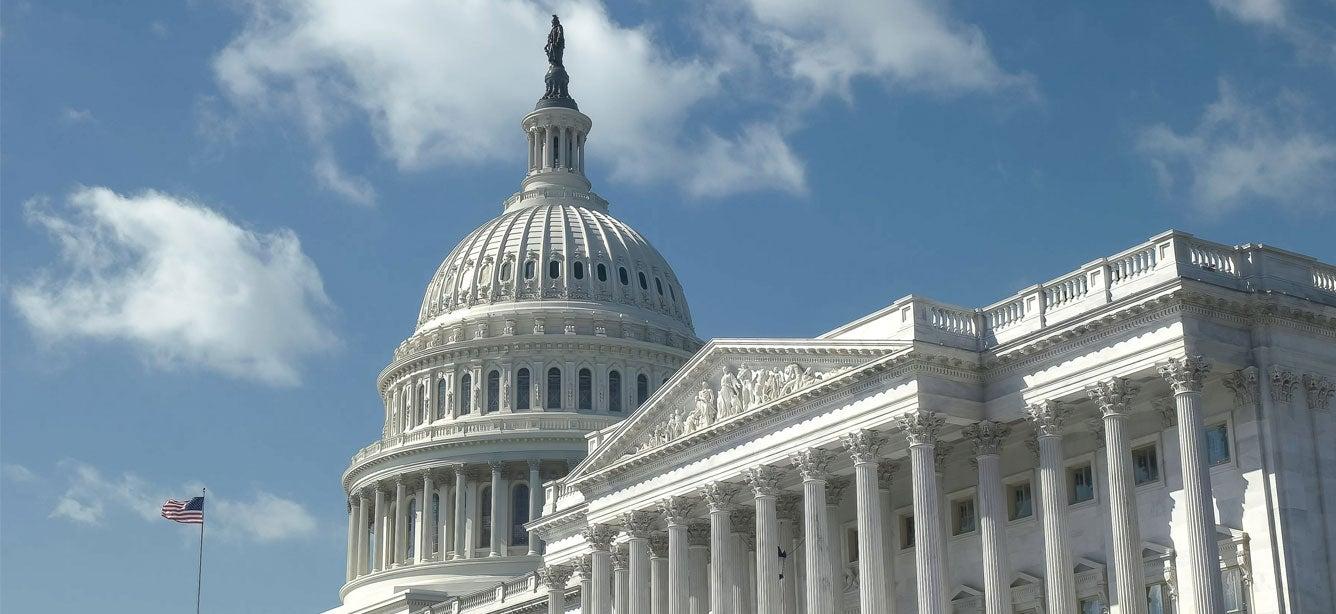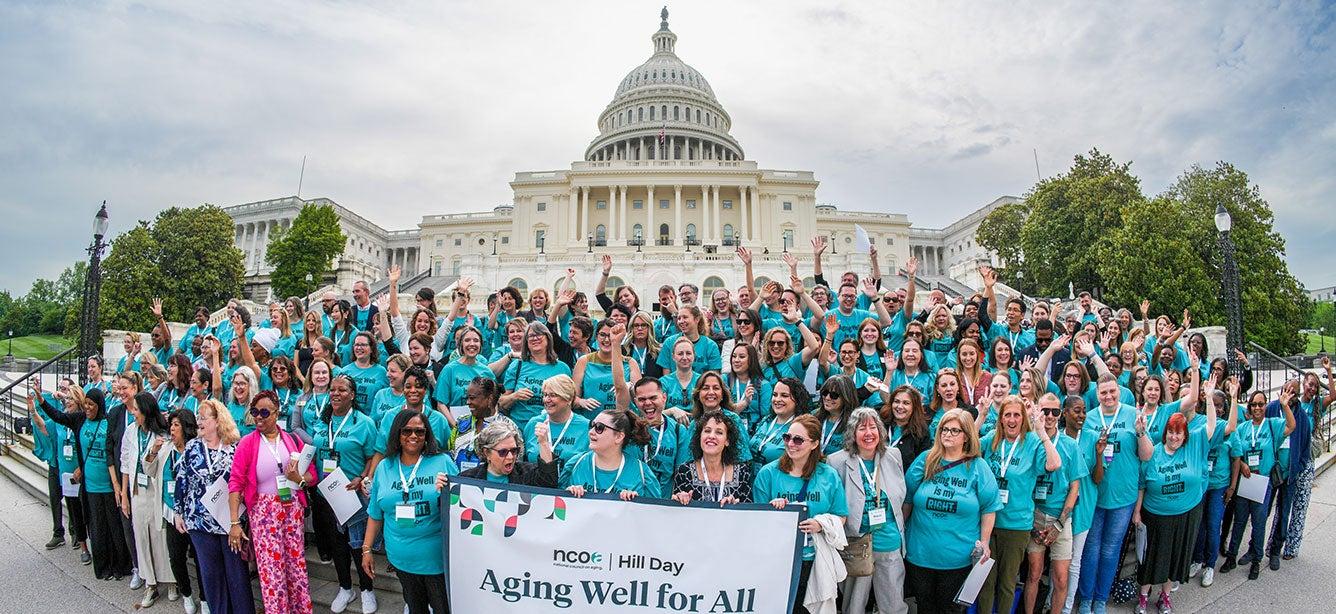
When Congress is in recess, most lawmakers return to their home states and connect with their constituents. COVID-19 has changed that—with many members conducting legislative business remotely and not attending as many community events.
Fewer chances to meet with your lawmakers in person means it’s more important than ever to contact your members via email, sign up for their newsletters, and follow them on social media to express your opinion.
The pandemic has required creativity and innovation to serve older adults, and you can put those same skills to work identifying personal ways to deliver your message about the issues facing older adults in your community.
When is Congress in recess?
The dates below are district work periods, or recesses, and House committee work periods when there are no floor votes. Members of Congress are usually away from the Capitol and more likely to engage with their constituents. These scheduled periods are subject to change given pressing demands for floor votes or committee action, as is occurring in August.
The remaining recesses for 2021 are:
- Summer
- House: July 31-Aug. 30, Sept. 3-8 (committee work period Aug. 31-Sept. 2, Sept. 9-14)
- Senate: Aug. 9-Sept. 10
- Sept. 15-17
- Fall
- Oct. 11-18 (Senate recess; House committee work period)
- Nov. 8-10 (Senate recess; House committee work period)
- Nov. 8-12 (House Committee work period Nov. 8-10)
- Nov. 19-29
- Dec. 13-31
How do I contact my members of Congress?
- Contact your legislators using our Action Center.
- Use our Advocacy at Home tips.
- Attend a town hall meeting in your community, via phone, or online.
- Learn about the latest policy topics and advocacy opportunities.
- Tell us how it went. Your response will help us track our advocacy efforts.
What issues should I advocate for on behalf of older adults?
NCOA is advocating for five key issues in Congress this fall. Below is the background, current status, and actions you can take for each.
Issue 1: Better Access to Home Care
The Challenge
Medicaid is the primary payer for long-term care. Unfortunately for low-income older adults, nursing home coverage is mandatory, but home care is optional and underfunded. As a result, many have no choice but to move into an institution, and up to 1.5 million people are on waiting lists for home care.
Most Americans prefer home care because it keeps families together, is safer and less expensive, and provides a better quality of life. The pandemic also exposed the dangers of institutionalization. Nursing home deaths have accounted for nearly one-third of COVID-19 fatalities, and an estimated 60% of nursing home staff remain unvaccinated.
Home care workers have been underpaid and undervalued for far too long, creating serious turnover and access problems, as well. Almost half of these workers have incomes below 200% of poverty, nearly 88% are women, 62% are people of color, and one-third are over age 55.
Current Status
The president has recommended, and Congress has proposed, a $400 billion investment to increase access to home and community-based services and provide home care workers with living wages and better benefits.
The Better Care Better Jobs Act (S. 1844/H.R. 4131) is a historic change that will help 3.2 million Americans finally obtain the home care they prefer, while strengthening the economy by creating over 1.6 million new jobs with living wages and better benefits.
However, the path forward to fully fund and enact this proposal this year will be difficult unless members of Congress hear from their constituents about why it’s so important.
Learn More
- Justice in Aging Home Care fact sheet
- Harvard and MIT analysis of Better Care Better Jobs Act
Take Action
Email your senators and representatives to urge them to improve access to home care
Issue 2: Improved Medicare Coverage
The Challenge
Medicare is a lifeline for 62 million older adults and people with disabilities, but many beneficiaries still struggle to afford the care they need. About half live on annual incomes below $30,000. There is an opportunity this year to modernize the program and improve coverage. NCOA is advocating to:
Reduce prescription drug costs and eliminate barriers to low-income assistance
- Prescription drug costs are rising rapidly and are not affordable for many older Americans. Low-income beneficiaries face barriers to getting extra help, there is no cap on out-of-pocket costs, and the appeals system is confusing and burdensome.
- Low-income Americans on Medicare receive less help to afford out-of-pocket health costs compared to people under age 65 who live in a Medicaid expansion state or receive subsidies under the Affordable Care Act.
Address the gaps in Medicare coverage
- Dental: Almost half of Medicare beneficiaries did not see a dentist in the past year or do not have dental coverage. Those with coverage often have high coinsurance and strict limits on benefit amounts.
- Hearing: Medicare generally does not cover testing or hearing aids even though half of those 75 and older have disabling hearing loss. With an average $2,500 cost for an exam, single hearing aid, and fitting, only 30% of adults over 70 who could benefit from hearing aids use them.
- Vision: Almost 40% of Medicare beneficiaries have trouble seeing even with glasses, and only 58% have had an eye exam in the past year, as routine eye exams and glassed are not covered by Medicare.
Current Status
Momentum is building in Congress to reduce Medicare prescription drug costs and expand coverage to dental, hearing, and vision services. NCOA is also prioritizing improving access to Medicare low-income protections.
In December 2019, the House passed the Elijah E. Cummings Lower Drug Costs Now Act (H.R. 3). It addressed Medicare prescription drug costs, included improvements for low-income beneficiaries, and provided for dental, vision, and hearing coverage. These elements were reintroduced in April. Many see this bill as the foundation for what Congress may pass this year.
In addition, Senate Aging Committee Chairman Bob Casey (D-PA) has introduced the Lowering Medicare Premiums and Prescription Drug Costs Act (S. 1844), which would significantly improve Medicare low-income protections. And House Ways and Means Committee Chairman Lloyd Doggett has introduced the Medicare Dental, Vision, and Hearing Benefit Act (H.R. 4311).
Learn More
- Medicare improvement letter from national groups representing beneficiaries
- Medicare Rights Center issue brief on prescription drug Low-Income Subsidy
- Kaiser Family Foundation issue brief on Medicare dental coverage
Take Action
Email your senators and representative to urge them to improve Medicare coverage
Issue 3: Pandemic Recovery and Aging Services
The Challenge
As communities reopen, the aging services network continues to address the needs of older adults in their communities. While a combination of in-person and digital programming might reach more individuals, local organizations need extra funding to sustain these programs.
Efforts to promote economic recovery by investing in caregiving and infrastructure also must fund home care and caregiver support services delivered by the aging services network; ensure broadband expansion that includes access to affordable connections, devices, and digital literacy; and invest in the modernization of senior centers and other Older Americans Act (OAA) service providers.
Current Status
The American Rescue Plan, enacted in March, is the last pandemic emergency relief legislation. Congress and the Administration are negotiating legislation to foster economic recovery from the pandemic, including infrastructure investment. Resources for aging services programs or infrastructure and support for digital access and literacy for older adults have not been explicitly noted in any public proposals.
Learn More
- NCOA article on the White House American Jobs Plan
- NCOA article on the White House American Families Plan
Take Action
- Tell Congress to support aging services recovery and reopening
- Share your stories of reopening successes and challenges with NCOA so we can amplify your voice!
Issue 4: FY22 Aging Services Funding
The Challenge
For over a decade, investments in federal aging services programs have failed to keep pace with the growth of the older population and have suffered from indiscriminate cuts. Pandemic emergency relief has allowed services at a greater scale, and the core programs need support to keep up with those demands.
Current Status
The Administration’s FY22 budget request released on May 28 set the stage for making overdue investments in aging services, including OAA programs. The bills approved by the House Appropriations Committee in June go even further, proposing increases for many aging services, including $45 million more for the Senior Community Service Employment Program (SCSEP) and $5 million more for the Medicare State Health Insurance Assistance Program (SHIP).
Learn More
- NCOA article on FY22 House appropriations
- Federal budget basics
- FY22 aging services funding table
- NCOA FY22 priorities
Take Action
Email your members of Congress to urge them to invest in SCSEP, falls prevention, CDSME, and Medicare SHIP.
Issue 5: Employment Assistance
The Challenge
Unemployed older adults have more trouble returning to work than their younger counterparts. Nearly 2 million older workers continue to look for work, and over half have experienced long-term unemployment of 27 weeks or more. Another 2 million have abandoned the job search and opted for premature retirement.
A significant barrier to employment for many older workers is age discrimination. Over a decade ago, a Supreme Court decision undermined protections in the workplace, and a more recent decision denied protections for job applicants.
SCSEP, the only federal job training program focused on older workers, is severely underfunded, with the capacity to serve under 1% of those eligible for the program.
Current Status
The House once again passed bipartisan legislation to restore Age Discrimination in Employment Act (ADEA) protections in the workplace under the Protecting Older Workers Against Discrimination Act (POWADA). The Protect Older Job Applicants (POJA) Act, which would extend ADEA protections to older adults seeking employment, has been re-introduced and is awaiting a House vote. The House also passed FY22 appropriations legislation proposing $450 million in FY22 funding for SCSEP, which would be a $45 million increase.
Learn More
- NCOA testimony for Senate Select Committee on Aging hearing, “"A Changing Workforce: Supporting Older Workers Amid the COVID-19 Pandemic and Beyond"
- NCOA POJA Act endorsement
- The New School Schwartz Center for Economic Policy Analysis Older Workers Report
- AARP Public Policy Institute Employment Data Digest
Take Action
- Urge your Senators to pass POWADA
- Tell Congress to pass the POJA Act
- Ask your Senators to invest in SCSEP
Remember to Say Thanks
If you are able to engage your members of Congress, don’t forget to send a thank you. It’s an important way to build the relationship. Send a traditional thank you letter through the mail and express your appreciation in a public way through social media.
- Use our sample thank you letter to get started.
- Look up your delegation’s social media accounts.
Then Share It!
Sharing your advocacy efforts will encourage others to join in the effort. Tweet a photo from your meeting or post a recap on Facebook. Be sure to mention and tag the member of Congress in your post to publicly recognize their willingness to learn more about their senior constituents.



